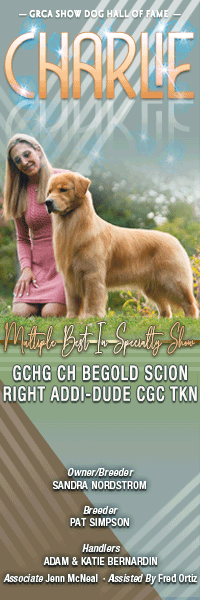New Information On The “Hunger Gene” In Labs And Flat-Coats
Click here to read the complete article
176 – August, 2024
 By Caroline Coile
By Caroline Coile
Researchers have unraveled more information about the genetic POMC mutation that makes some Labrador Retrievers perpetually hungry. For one, the mutation has an allele frequency of 12% in Labs and of 60% in Flat-Coated Retrievers. These are the only two breeds in which the mutation has been found despite surveying more than 40 other breeds.
Dogs with one copy of the mutated gene have increased weight, body condition score, and food motivation. Dogs with two copies of the mutated gene have even higher weight, body condition score, and food motivation.
Because only 4% of Labs are homozygous for (have two copies of) the mutated gene, no homozygous dogs were used in the study. In a comparison of wild type (no mutated POMC genes) and heterozygous (one mutated POMC gene) in which the dogs were allowed to eat as much as they wanted, the heterozygotes ate more than the wild type dogs, but the difference was not statistically significant. The wild types did regurgitate the huge meals significantly more, however.
The researchers next compared whether the gene affected if a dog would eat less tasty food. They did this by adding lime juice to otherwise identical foods. Both groups of dogs ate just as much lime-flavored food, although the dogs with the mutated gene ate it more quickly.
Click here to read the complete article
176 – August, 2024

Short URL: https://caninechronicle.com/?p=297067
Comments are closed











